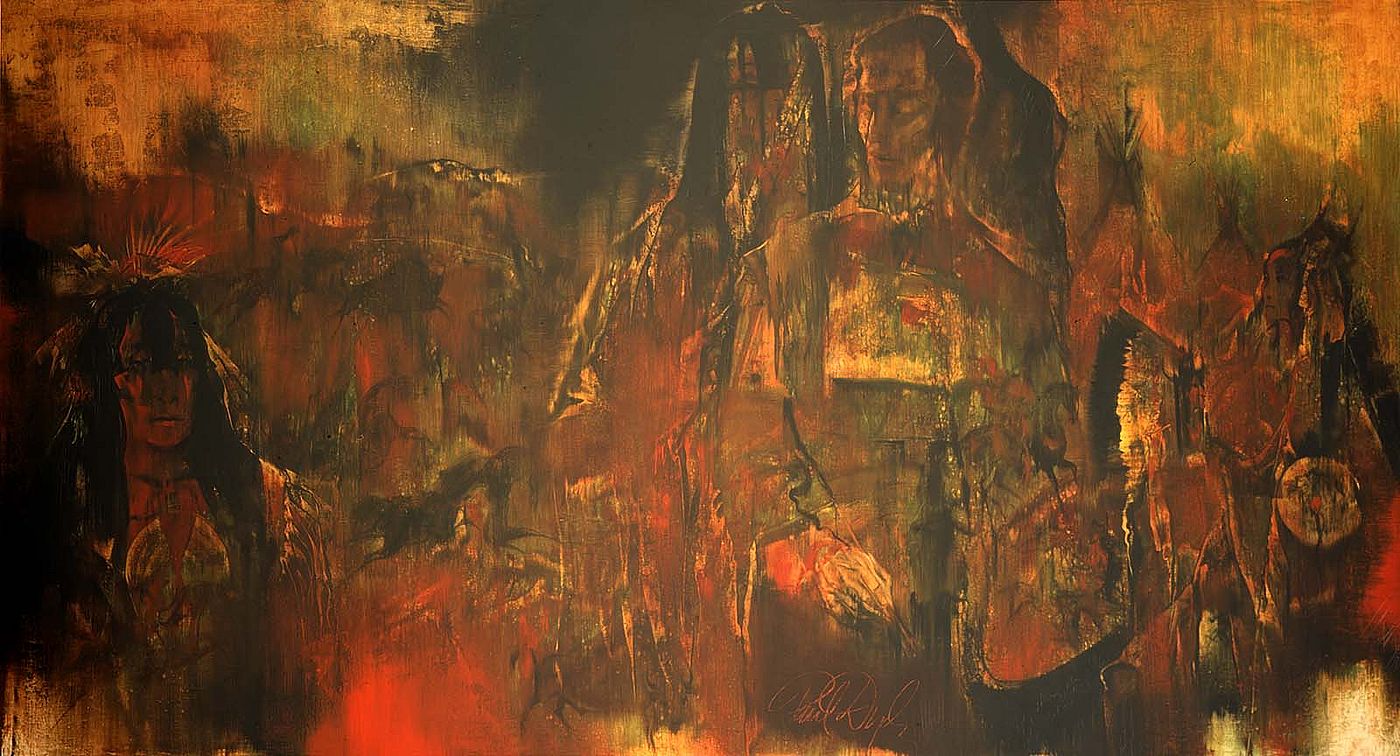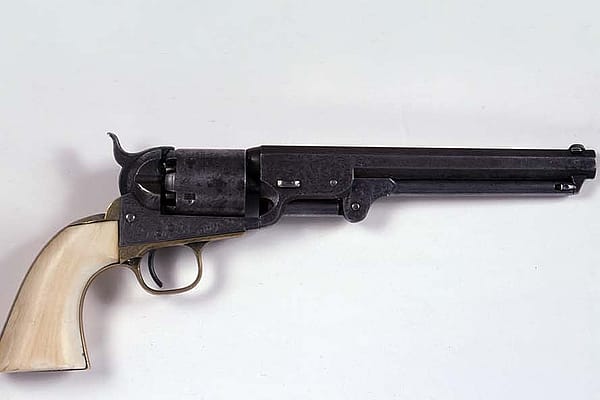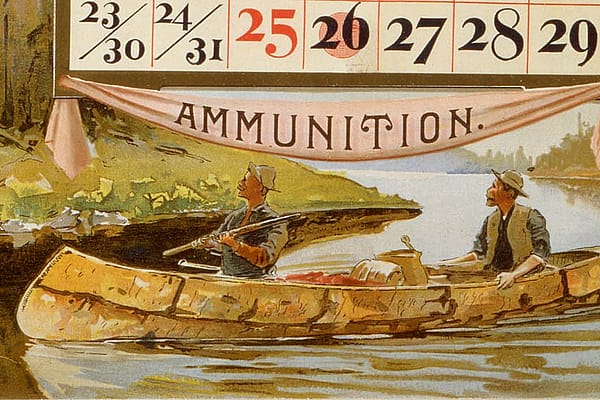
Treasures from Our West: “Dear Mr. Catlin…I Love You” by Paul Dyck
Originally published in Points West in Fall 2010
Paul Dyck pays tribute to his idol, George Catlin, one of the first to document the Plains Indians in art. In this work from 1964, Dyck incorporates original images by Catlin using Flemish and Asian painting techniques. An artist in the early-to-mid nineteenth century, Catlin traveled West to study Native cultures. Dyck’s work features a portrait of Catlin at right, with brush in one hand and painting palette in the other; his subject Buffalo Bull’s Back Fat at left; and various renditions of bison and horses reminiscent of cave paintings.
Paul Dyck, given the Lakota Sioux name ‘Rainbow Hand,’ sought to recapture the spirit of Native American tribes in his work. He was born in 1917 to pioneer parents and raised among Cheyenne, Crow, and Blackfeet in Calgary, Alberta, Canada. After artistic training in Europe, Dyck returned to America to explore Native American culture. This influenced him to craft expressive representations of the Plains Indians and to collect an extensive array of Indian artifacts.
The painting’s title encourages the viewer to connect intimately with Catlin through the respect, admiration, and love that Dyck felt while creating this work.
Paul Dyck (1917 – 2006). Dear Mr. Catlin… I Love You…, 1964. Oil on canvas, 43 x 79.25 inches framed. Gift of Dr. and Mrs. Dean Nichols. 7.73
Post 097
Written By
Nancy McClure
Nancy now does Grants & Foundations Relations for the Center of the West's Development Department, but was formerly the Content Producer for the Center's Public Relations Department, where her work included writing and updating website content, publicizing events, copy editing, working with images, and producing the e-newsletter Western Wire. Her current job is seeking and applying for funding from government grants and private foundations. In her spare time, Nancy enjoys photography, reading, flower gardening, and playing the flute.










